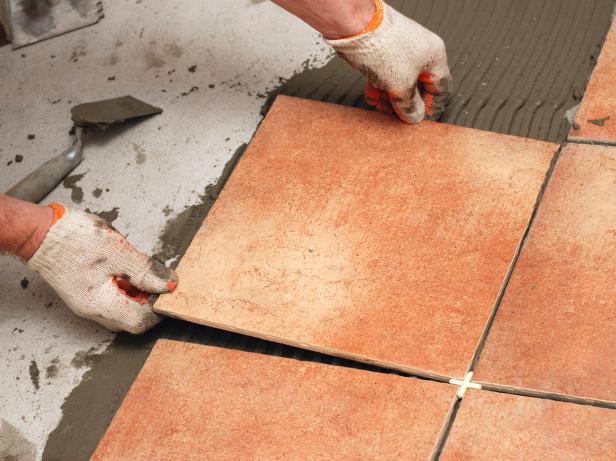Your Relied On Companion for Tile Installation Austin and Beyond
Your Relied On Companion for Tile Installation Austin and Beyond
Blog Article
Discover the Secrets to Perfect Tile Setup Each Time
Understanding the art of floor tile installation involves a series of precise steps and techniques that, when implemented correctly, can result in a polished and smooth coating. By understanding the keys behind each action, you can ensure that your tile installation not just fulfills but exceeds your expectations.
Correct Surface Area Preparation
Effective ceramic tile setup hinges dramatically on precise surface preparation to make certain a flawless end result. Prior to laying floor tiles, it is crucial to analyze the substrate's condition thoroughly. The surface should be clean, completely dry, and structurally sound to avoid future issues such as loose tiles or broken cement. Any type of existing flooring material, adhesives, or sealants need to be removed to create a consistent base for the brand-new floor tiles.
To ensure proper bond, it is recommended to rough up smooth surface areas with sanding or scarifying. Additionally, using a guide can enhance bonding between the substratum and the tile adhesive. Uneven surfaces need to be leveled making use of a self-leveling substance to stop lippage and ensure a smooth coating.
Furthermore, looking for possible sources of moisture is crucial, as excess moisture can bring about mold and mildew development and damages the ceramic tiles gradually. Utilizing a wetness barrier or waterproofing membrane in damp areas like restrooms or kitchen areas is important to secure the tiles from water damage. By thoroughly preparing the surface prior to floor tile setup, one can develop a aesthetically attractive and resilient tiled area that will certainly stand the test of time.

Choosing the Right Adhesive
Picking the suitable adhesive is a vital action in ensuring the effective installation of floor tiles. The kind of glue you choose will certainly depend upon various factors such as the type of ceramic tile, the substrate material, and the area of the setup. There are various sorts of adhesives readily available on the market, consisting of thin-set mortar, mastic, and epoxy.
:max_bytes(150000):strip_icc()/SPR-can-i-install-tile-on-plywood-1822594-step-07_53506-b5be7091e0ac4cdfb690bb9bca2f3ceb.jpg)
Epoxy adhesives are exceptionally sturdy and water-resistant, making them ideal for locations susceptible to moisture such as kitchens or bathrooms. They are also ideal for setting up glass or steel ceramic tiles. When picking a glue, make certain to follow the supplier's referrals and think about the particular needs of your ceramic tile installment project.
Accuracy Cutting Techniques
One of the most common tools used for precision cutting in ceramic tile installation is the ceramic tile cutter. Ceramic tile cutters come in numerous kinds, consisting of hand-operated ceramic tile cutters, electrical damp saws, and portable floor tile cutters. Manual tile cutters are appropriate for straight cuts on ceramic and porcelain tiles, providing tidy look at this site and accurate sides.
Additionally, utilizing devices like tile scribes or glass cutters can aid in scoring and snapping tiles with accuracy. By understanding these precision cutting methods, ceramic tile installers can make sure a professional coating and a visually attractive outcome in their ceramic tile projects.

Cement Application Tips
When transitioning from accuracy reducing methods to grout application in tile installment, focus to detail and method is vital for accomplishing a flawless surface. Cement offers not only as a useful aspect that fills the voids in between tiles but additionally plays a considerable role in the total visual of the setup.
When applying cement, work in tiny areas at a time to avoid it from drying as well swiftly. Use a rubber float to push the grout into the joints at a 45-degree angle, ensuring complete protection and compacting the material. As soon as the grout is applied, make use of a moist sponge to cleanse the floor tiles, seeing to it not to get rid of grout Read Full Report from the joints. Buff the tiles with a completely dry cloth to eliminate any kind of haze and accomplish a sleek coating. Complying with these cement application suggestions will certainly cause an expertly mounted tile surface area that enhances the charm of any kind of room.
Finishing Touches and Maintenance
To complete the tile installation task effectively, focus to information throughout the completing touches and regular maintenance is essential. After the grout has actually dried out and the ceramic tiles are safely in location, the last steps involve making sure that all sides are effectively secured.
Regular upkeep is crucial to maintaining the elegance and functionality of your tiled surface areas. A basic routine of sweeping or vacuuming adhered to by wiping with a gentle cleanser can help maintain your tiles looking excellent (tile installation austin). For areas pop over here that are often exposed to dampness, such as shower rooms or cooking areas, normal resealing of cement lines is recommended to stop mold and mildew and mildew development
Conclusion
Finally, achieving best floor tile installation whenever requires interest to information and correct techniques. By concentrating on surface preparation, choosing the proper adhesive, using accuracy cutting techniques, applying cement thoroughly, and completed with attention to detail, you can make sure a professional-looking outcome. Remember to follow these actions and maintain your tiles consistently to lengthen their lifespan and keep them looking their ideal.
One of the most common tools used for precision cutting in ceramic tile installation is the tile cutter. Ceramic tile cutters come in different kinds, consisting of hands-on floor tile cutters, electrical damp saws, and portable ceramic tile cutters. Hand-operated ceramic tile cutters are ideal for straight cuts on ceramic and porcelain floor tiles, offering exact and clean sides. Furthermore, making use of devices like floor tile scribes or glass cutters can assist in racking up and breaking tiles with precision. By mastering these precision reducing strategies, floor tile installers can guarantee a specialist coating and an aesthetically attractive result in their ceramic tile jobs.
Report this page